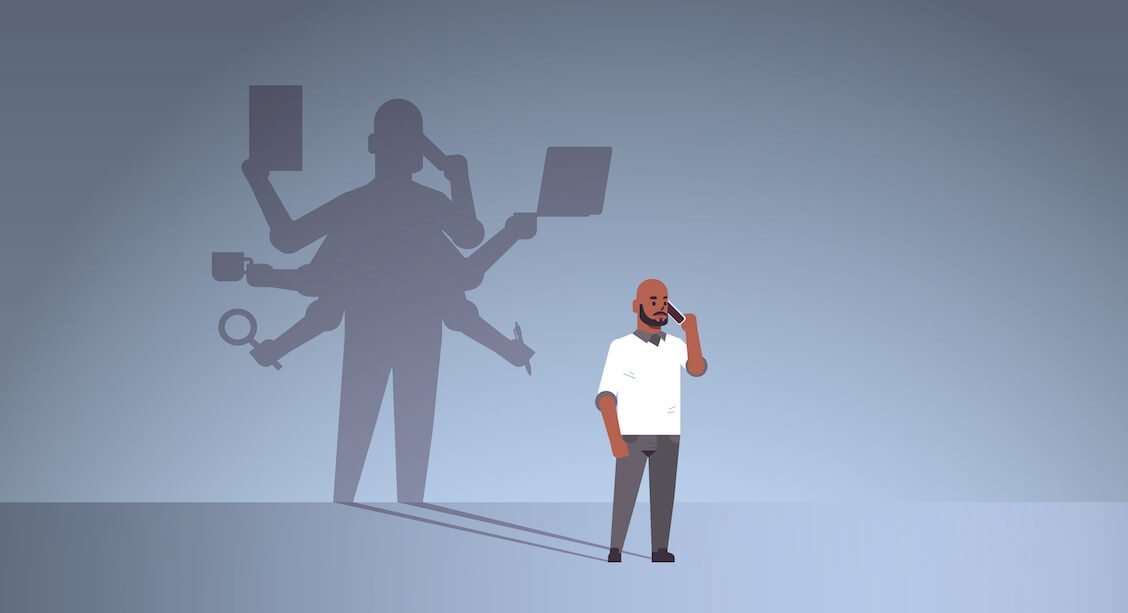
In today’s fast-paced world, multitasking has become a celebrated skill, often seen as a symbol of productivity and efficiency. However, what if we told you that multitasking is not as effective as it seems? In fact, what if we told you that multitasking was a myth?
As humans, we are wired to believe that juggling multiple tasks simultaneously leads to enhanced productivity. But research suggests otherwise. Our brains are not designed to handle multiple tasks at once, and attempting to do so can actually hinder our performance and overall effectiveness.
What Is Multitasking?
Multitasking refers to the act of performing multiple tasks simultaneously or switching rapidly between tasks. It involves dividing one’s attention and focus among different activities or responsibilities. While it is often seen as a desirable skill, it is important to understand that true multitasking is limited by our brain’s cognitive abilities.
Examples of multitasking can include:
- Answering emails while participating in a conference call.
- Texting or browsing social media while watching a movie or TV show.
- Cooking dinner while listening to a podcast or audio book.
- Writing a report while intermittently checking and responding to instant messages.
- Driving and talking on the phone or using a hands-free device.
You get the idea.
What Multitasking Does to the Brain: New Studies
Recent research suggests that when we engage in multitasking, our brain faces significant challenges. Instead of efficiently handling multiple tasks, our cognitive resources become divided and strained. This division of attention leads to reduced focus, decreased productivity, and an increased likelihood of errors.
Moreover, studies reveal that multitasking can negatively affect our brain’s ability to retain information and switch between tasks seamlessly. The constant shifting of attention between different activities disrupts our working memory and impairs our capacity to concentrate fully on any single task.
Downsides of Multitasking/ Why Multitasking Is a Bad Idea
- Divided attention: Multitasking forces the brain to divide its attention between multiple tasks, which can result in decreased focus and attention on each individual task.
- Cognitive overload: Engaging in multitasking puts a strain on the brain’s cognitive resources as it tries to rapidly switch between different activities. This can lead to mental fatigue and decreased overall performance.
- Reduced productivity: Contrary to popular belief, multitasking does not make us more efficient. In fact, studies show that constantly shifting attention between tasks can decrease productivity and increase the likelihood of errors or mistakes.
- Impaired memory: Multitasking can hinder the brain’s ability to consolidate and retain information. With divided attention, important details may not be properly encoded into memory, making it harder to recall later.
- Increased stress: Juggling multiple tasks simultaneously can lead to heightened stress levels. The brain must constantly shift its focus, causing a sense of overwhelm and contributing to feelings of anxiety or pressure.
- Decreased creativity: Multitasking can hinder creative thinking and problem-solving abilities. The brain needs dedicated focus to generate innovative ideas and make connections between different concepts.
- Difficulty in task-switching: Multitasking can make it harder for the brain to smoothly transition between different tasks. Constantly switching gears can result in a loss of momentum and disrupt workflow.
- Impaired decision-making: When attention is divided, the brain may struggle to make sound and informed decisions. Multitasking can compromise judgment and lead to suboptimal choices.
- Reduced overall performance: Despite the perception of increased efficiency, studies consistently show that multitasking leads to decreased overall performance and productivity.
How to Stop Multitasking
Prioritize tasks: Identify the most important tasks that require your attention and focus on them one at a time. Create a to-do list or schedule to help you stay organized and prioritize effectively.
Practice single-tasking: Instead of trying to do multiple things simultaneously, embrace single-tasking. Dedicate your full attention to one task before moving on to the next. This allows for better concentration and improved productivity.
Set specific time blocks: Allocate dedicated time blocks for different tasks or activities. For example, designate a specific time for checking emails or responding to messages, rather than doing it intermittently throughout the day. This helps avoid constant distractions and interruptions.
Minimize distractions: Create an environment that supports single-tasking by minimizing distractions. Put away your phone or turn off notifications during focused work periods. Consider using productivity apps or browser extensions that block distracting websites or limit access to social media.
Utilize time management techniques: Explore time management techniques such as the Pomodoro Technique, where you work in focused bursts followed by short breaks. This helps maintain concentration and prevents the temptation to multitask.
Practice mindfulness: Cultivate mindfulness and be fully present in the task at hand. Train your mind to resist the urge to switch tasks or engage in unrelated activities. Mindfulness techniques such as deep breathing or meditation can help enhance focus and reduce distractions.
Delegate or outsource tasks: If possible, delegate tasks to others or consider outsourcing certain responsibilities. This allows you to focus on the most important tasks while reducing the need for multitasking.
Take regular breaks: While it may seem counterintuitive, taking regular breaks can actually improve productivity and prevent burnout. Use these breaks to rest and recharge, away from work-related tasks, giving your brain a chance to reset.
Practice self-awareness: Be aware of your multitasking habits and the situations that trigger them. Recognize when you are slipping into multitasking mode and consciously redirect your focus to a single task.
Use time tracking tools: Time tracking tools offer benefits such as increased productivity, enhanced focus, accurate time management, data-driven insights, and improved accountability. They help optimize workflow, maximize efficiency, and achieve better work-life balance.
Be patient with yourself: Breaking the habit of multitasking takes time and effort. Be patient with yourself as you adjust to a new way of working. Celebrate small victories along the way and acknowledge the progress you make in focusing on one task at a time.
What Is Singletasking?
Singletasking, also known as monotasking, refers to the practice of focusing on one task or activity at a time, giving it your undivided attention. It involves dedicating your full concentration and effort to a single task without being distracted or interrupted by other activities.
Singletasking is the opposite of multitasking and emphasizes the value of focused attention and deep engagement with a single task to enhance productivity and effectiveness.
How to Singletask?
To successfully practice singletasking, it is crucial to create an environment conducive to focused work. Here are some steps to achieve that:
- Minimize distractions: Remove potential distractions and limit interruptions. Silence or turn off your phone, or even better, keep it in another room to avoid temptation. Close unnecessary tabs on your computer and use anti-distraction tools to block irrelevant apps or websites.
- Set communication boundaries: Adjust your communication channels to prevent disruptions. Switch your Slack status to “do not disturb” or set specific times for checking and responding to messages. If possible, use headphones or find a quiet space like a meeting room to minimize interruptions.
- Establish clear boundaries: Communicate with others about your need for uninterrupted focus. If you’re working from home, let your family or housemates know that you shouldn’t be disturbed during specific times. In an office setting, inform colleagues that you’re engaged in focused work and should only be interrupted for urgent matters.
- Avoid checking email: Resist the urge to constantly check your email. Instead, allocate specific times throughout the day to review and respond to messages. This allows you to maintain uninterrupted focus on the task at hand.
To Sum Up
In conclusion, the myth of multitasking has been debunked, revealing its inherent inefficiency. While multitasking may seem like a desirable skill, research has shown that our brains are not designed to handle multiple tasks simultaneously. Attempting to do so can lead to reduced productivity, impaired focus, and increased stress levels. The practice of singletasking, on the other hand, emphasizes the value of focused attention and deep engagement with a single task, ultimately enhancing productivity and overall effectiveness. By embracing singletasking and prioritizing one task at a time, we can break free from the multitasking illusion and unlock our true potential for success.


